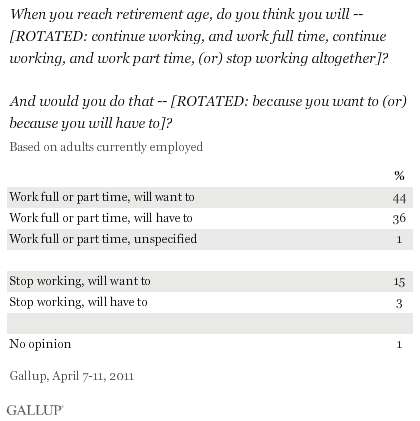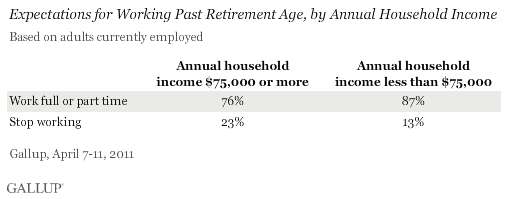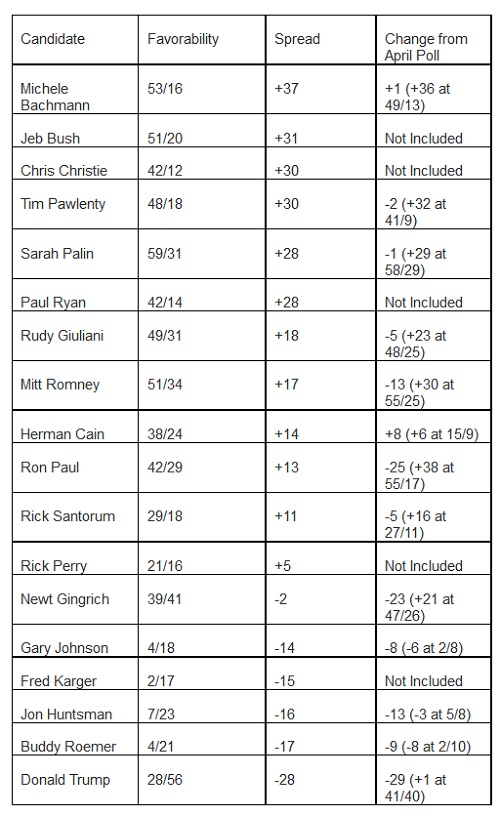-
Flap’s Links and Comments for June 1st on 13:18
These are my links for June 1st from 13:18 to 19:30:
- President 2012: Fox News and Sarah Palin Have a Meeting | Flap’s Blog – FullosseousFlap’s Dental Blog – RE: Palin Derangement Syndrome and a cut and paste from another comment. Good grief…..be original at least.
- President 2012 Video: Sarah Palin’s Bus Vandalized With “I, The Media Whore” | Flap’s Blog – FullosseousFlap’s Dental Blog – RE: Palin Derangement Syndrome – without a doubt.
But, then again you would not support any of the GOP candidates wh…
- President 2012 Video: Sarah Palin’s Bus Vandalized With “I, The Media Whore” | Flap’s Blog – FullosseousFlap’s Dental Blog – President 2012 Video: Sarah Palin’s Bus Vandalized With “I, The Media Whore” #tcot #catcot
- Poll Watch: Most American Workers Expect to Continue Working After Retirement Age | Flap’s Blog – FullosseousFlap’s Dental Blog – Poll Watch: Most American Workers Expect to Continue Working After Retirement Age #tcot #catcot
- » Did Rep. Weiner Violate House Rules? – Big Government – RT @AndrewBreitbart: Did @RepWeiner Violate House Rules By Not Reporting 'Hack'?
- Dilbert May 18, 2011 – Transition | Flap’s Blog – FullosseousFlap’s Dental Blog – Dilbert May 18, 2011 – Transition #tcot #catcot
- The Myth of California Proposition 13 – Is it Toast? | Flap’s Blog – FullosseousFlap’s Dental Blog – The Myth of California Proposition 13 – Is it Toast? #tcot #catcot
- President 2012: Fox News and Sarah Palin Have a Meeting | Flap’s Blog – FullosseousFlap’s Dental Blog – President 2012: Fox News and Sarah Palin Have a Meeting #tcot #catcot
- Flap’s Links and Comments for June 1st on 05:19 | Flap’s Blog – FullosseousFlap’s Dental Blog – Flap’s Links and Comments for June 1st on 05:19 #tcot #catcot
- Census Watch: Hispanic Population Now 16.3 Per Cent of the United States | Flap’s Blog – FullosseousFlap’s Dental Blog – Census Watch: Hispanic Population Now 16.3 Per Cent of the United States | Flap's Blog – FullosseousFlap's Dental Blog
- Huckabee says he could change mind on presidential bid | Arkansas News – Huckabee: Door open to 2012 presidential bid | Arkansas News
- President Obama Nominates Former Southern California Edison CEO and Left Wing Hack John Bryson for Commerce Secretary | Flap’s Blog – FullosseousFlap’s Dental Blog – President Obama Nominates Former Southern California Edison CEO and Left Wing Hack John Bryson for Commerce Secr…
- The Patriot Act Threatens Cloud Computing | Roger Strukhoff – @strukhoff Wow! sort of like this photo of Harry Reid you posted at your site: Vulgar, uh no – funny perhaps.
-
President 2012 Video: Sarah Palin’s Bus Vandalized With “I, The Media Whore”
Someone put a “I, The Media Whore” Sign on Sarah Palin’s Bus Outside of FOX Studios in NYCVery classy….NOT.
-
Poll Watch: Most American Workers Expect to Continue Working After Retirement Age

According to the latest Gallup Poll.A combined 8 in 10 American workers think they will continue working full or part time after they reach retirement age. Proportionately more of these workers, 44% to 36%, say they will do so because they “want to” rather than because they “will have to.”
Overall, most workers expect to work part time after retirement age (63%), rather than to work full time (18%) or stop working altogether (18%). Those who expect to work full time are twice as likely to say they will do so out of need rather than as a choice. In contrast, those who expect to stop working overwhelmingly say it is because they want to. Workers who expect to work on a part-time basis are more likely to say they will want to work than will need to do so.
The expectations for working past retirement age graph:
 And, the demographics graph for those working past retirement age:
And, the demographics graph for those working past retirement age:
But, expectations are different than reality, as few retirees rely on part-time work.
The 80% of current workers expecting to work past retirement age highlights the differences in retirement experience and expectations between current and future retirees. A separate question in the poll found a total of 18% of current retirees saying part-time work is a major (2%) or minor source (16%) of retirement income for them, compared with 74% of nonretirees (including those currently working and those not working) who expect part-time work to be a major (22%) or minor (52%) source of income in retirement.
Additionally, current retirees say they retired at age 60, on average, compared with nonretirees’ average expectation of retiring at age 66. The average expected retirement age among nonretirees has increased in recent years.
So, what does this all mean?
The eyes for potential work rather it be full-time or part-time, are better when you are contemplating retirement versus ACTUALLY being retired. Future retirees are perhaps being too optimistic out of a sense of self-worth, because the number of job opportunities may not be available to them.
The common expectation among today’s workers that they will continue working once they reach retirement age underscores the changing nature of the retirement landscape in the United States, partly because of changes in the economics of retirement and partly because of individuals’ desired level of activity in retirement. Changes in the payment of Social Security benefits in recent decades as well as many employers’ moving away from guaranteed pensions for retirees in favor of employee-directed retirement savings plans — in addition to the high cost of healthcare — have altered the economic calculus of retirement. Also, the significant percentage of workers who say they will continue working beyond retirement age because they “want to” suggests American workers may be less interested in a lifestyle free from work in their older years, regardless of their economic situation.
As more and more baby boomers retire, an emerging question is whether there will be enough jobs for older workers who want to work, particularly if the overall employment situation remains weak.
-
Dilbert May 18, 2011 – Transition
-
The Myth of California Proposition 13 – Is it Toast?

Howard Jarvis, chief sponsor of California Proposition 13, signals victory as he casts his own vote at the Fairfax-Melrose
precinct, June 1978. Courtesy of the Los Angeles TimesCalifornia Proposition 13 will be toast only if you desire a colossal collapse of the California real estate market and state government.The analysis of California demographics and history is so flawed that I hesitate to mention that the Professor pronouncing them is from my alma mater, USC.
The facts is that California Democrats have dominated the California Legislature for decades and would have spent California blind and bankrupt without Proposition 13, which limited taxes on real property. This is what was happening in California during the 1970’s prior to its passage.
The California Legislature, County and City governments just could not say no to government spending. It was far easier to raise property taxes a few more per cent every year or to instruct County Assessors to inflate the assessed value of homes and/or apartment buildings, than to disappoint a voting constituency. Property taxes rose California County by County until some folks were priced out of their homes i.e. had to sell them since they no longer had the cash to pay the growing property tax debt (liens are placed on California homes when property taxes are delinquent).
So, what would happen if Proposition 13 was disgarded or modified (not an easy task since it is engrained in the California Constitution.)?
The tenuous and foreclosure ridden California real estate market would collapse. As property taxes increased, in some cases precipitously, sales would commence or residents would walk away from their homes. With a burdening tax environment, even more businesses would relocate out of California since they would be unable to attract employees who could afford to live in California.
And, for what?
California’s tax scheme is already one of the highest in the country.
California’s State and Local Tax Burden Above National Average
California’s 2009 state and local tax burden of 11.8% of income is above the national average of 9.8%. California’s tax burden has decreased overall from 11.8% (5th nationally) in 1977 to 10.6% (6th nationally) in 2009. Californians pay $4,910 per capita in state and local taxes.
California’s 2011 Business Tax Climate Ranks 49th
California ranks 49th in the Tax Foundation’s State Business Tax Climate Index. The Index compares the states in five areas of taxation that impact business: corporate taxes; individual income taxes; sales taxes; unemployment insurance taxes; and taxes on property, including residential and commercial property. The ranks of neighboring states are as follows: Washington (11th), Oregon (14th), Arizona (34th), Nevada (4th) and Hawaii (22nd).
California’s Top Individual Income Tax Rate Is Third-Highest in the Nation
With seven brackets and a top rate of 10.3 percent for those earning over $1,000,000. California’s individual income tax has the third-highest rate and one of the most highly progressive structures in the nation. In 2009, California’s state-level individual income tax collections were $1,206 per person, which ranked 6th highest nationally. Since most small businesses are S Corporations, partnerships, or sole proprietorships, they pay their business taxes at the rates for individuals. That makes California’s taxes on small businesses some of the most burdensome in the nation.
California’s Corporate Income Tax Rate is the Highest in the West
Corporations looking to relocate, or even establish, a business in the West may shy away from California, as the state’s 8.84% flat rate is the highest corporate tax rate in the West. Nationally, only 8 states have a higher top corporate tax rate than California. In 2009, state-level corporate tax collections (excluding local taxes) in California were $259 per capita, which ranked 5th highest nationally.
California’s Sales Tax Rate Is Highest in the Nation
California levies an 8.25% general sales or use tax on consumers, which is the highest in the nation and above than the national median of 5.85%. Local governments are also permitted to levy another 1.5%. In 2007 combined state and local general and selective sales tax collections were $1,502 per person, which ranks 15th highest nationally. California’s statewide gasoline tax stands at 46.6 cents per gallon and is the 2nd highest in the nation, while its cigarette tax stands at $0.87 per pack of twenty (31rst highest nationally). Additionally, California’s general sales tax and various municipal sales taxes are levied on the sale of gasoline. The sales tax was adopted in 1933, the gasoline tax in 1923 and the cigarette tax in 1959.
Property Tax Collections Slightly Below Average
Despite Proposition 13, California ranks in the middle of the pack when the states are ranked on combined state/local property tax collections. Proposition 13 favors people who have owned the same property many years by only permitting re-evaluations at resale. As in most states, local governments in California collect far more in property taxes than the state does. California’s localities collected $968.01 per capita in property taxes in fiscal year 2006, the latest year for which the Census Bureau has published state-by-state data. At the state level, California collected $62.59 per capita during FY 2006. That brought its combined state/local property taxes to $1,030.60 per capita, ranked 28th highest nationally.
The problem with funding Big Government in California is not with tax receipts or Proposition 13. It is with the Democrats in the California Legislature who have not met a program they won’t fund, an entitlement they won’t increase or a tax they won’t raise.
Proposition 13 is going nowhere.
-
President 2012: Fox News and Sarah Palin Have a Meeting

Donald Trump makes a point as he walks with former governor of Alaska Sarah Palin in New York City as they make their way to a scheduled meeting Tuesday, May 31, 2010
Everyone knows this was going to happen soon. Fox News is telling Sarah Palin to either fish (run for the Presidency) or cut bait (say she isn’t and resume her commentary and her contract with Fox News.)Sarah Palin met with officials at Fox News in midtown Manhattan for over an hour on Wednesday.
After checking out of her Jersey City hotel earlier in the day for the fourth day of her “One Nation” bus tour, Palin told a gaggle of reporters that she was en route to Boston, but added: “I’m going to go talk to my bosses at Fox first, here, though. If we can make our way through the city in a big old bus.”
Palin’s bus was later parked outside Fox’s New York headquarters for about 90 minutes around lunchtime.
It was not clear with whom Palin met, but the visit comes on the heels of a New York Magazine report that Fox News chairman Roger Ailes believes Palin is “an idiot.” Fox denied that account.
The meeting also comes amid speculation about the limits of Palin’s Fox contract, which reportedly guarantees her $1 million a year through 2012.
I think she has about 30 days before Roger Ailes gives Palin the 60 day public warning, like he gave Newt and Santorum. Although, he might have given her the 60 day warning today.
In any case, Palin has to be in or out of the Presidential race by the 4th of July.
If she travels to Iowa and/or South Carolina in that bus, I think it pretty much says she is a go.
-
Flap’s Links and Comments for June 1st on 05:19
These are my links for June 1st from 05:19 to 13:08:
- Census Watch: Hispanic Population Now 16.3 Per Cent of the United States | Flap’s Blog – FullosseousFlap’s Dental Blog – Census Watch: Hispanic Population Now 16.3 Per Cent of the United States #tcot #catcot
- Huckabee: Door open to 2012 presidential bid | Arkansas News – RT @jmartpolitico: First Trump, now Huck suggesting he may reconsider? I'd like to see more context for quote, but…
- President Obama Nominates Former Southern California Edison CEO and Left Wing Hack John Bryson for Commerce Secretary | Flap’s Blog – FullosseousFlap’s Dental Blog – President Obama Nominates Former Southern California Edison CEO and Left Wing Hack John Bryson for… #tcot #catcot
- Flap’s Dentistry Blog: Celebrate: National Running Day – Celebrate: National Running Day
- President 2012 Iowa GOP Poll Watch: Romney 21% Cain 15% Palin 15% Gingrich 12% | Flap’s Blog – FullosseousFlap’s Dental Blog – President 2012 Iowa GOP Poll Watch: Romney 21% Cain 15% Palin 15% Gingrich 12% #tcot #catcot
- Anthony Weiner tries to move beyond Twitter mess – Ben Smith – POLITICO.com – RT @DanRiehl: Rut roh, Dem knives coming out 4 @RepWeiner "he’s in deep doo-doo .there’s something too weird about this"
- Flap’s California Morning Collection: June 1, 2011 | Flap’s Blog – FullosseousFlap’s Dental Blog – Flap’s California Morning Collection: June 1, 2011 #tcot #catcot
- Pew Report: 13 Per Cent of Online Adults Use Twitter | Flap’s Blog – FullosseousFlap’s Dental Blog – Pew Report: 13 Per Cent of Online Adults Use Twitter #tcot #catcot
- Flap’s Dentistry Blog: Video: Knock Tobacco Out of the Park – Video: Knock Tobacco Out of the Park
- Flap’s Dentistry Blog: The Morning Drill: June 1, 2011 – The Morning Drill: June 1, 2011
- Day By Day May 28, 2011 – The Son Also Rises | Flap’s Blog – FullosseousFlap’s Dental Blog – Day By Day May 28, 2011 – The Son Also Rises #tcot #catcot
- @Flap Twitter Updates for 2011-06-01 | Flap’s Blog – FullosseousFlap’s Dental Blog – @Flap Twitter Updates for 2011-06-01 | Flap's Blog – FullosseousFlap's Dental Blog
- Flap’s Links and Comments for May 31st on 20:03 | Flap’s Blog – FullosseousFlap’s Dental Blog – Flap’s Links and Comments for May 31st on 20:03 | Flap's Blog – FullosseousFlap's Dental Blog
- » Weiner’s Actual Tweet Stream Disputes His Version, Raises Valid Questions – Big Government – » Weiner’s Actual Tweet Stream Disputes His Version, Raises Valid Questions – Big Government
-
Census Watch: Hispanic Population Now 16.3 Per Cent of the United States
 According to the latest 2010 census.
According to the latest 2010 census.Hispanics are now the largest minority group in the United States. According to the 2010 Census, 50.5 million Hispanics now reside in the U.S. This means that Hispanics account for 16.3% of the total population in the U.S. By comparison, 63.7% of the population is white, 12.2% is black, and 4.7% is Asian. Nearly 2% of the population checked more than one race on their census form. The nation’s Latino population, which was 35.3 million in 2000, grew 43% over the decade. The Hispanic population also accounted for most of the nation’s growth (56%) from 2000 to 2010. Among children ages 17 and younger, there were 17.1 million Latinos in 2010, or 23.1% of this age group
But, geographically most Hsipanics continue to live in just nine states.
Geographically, most Hispanics still live in nine states that have large, long-standing Latino communities — Arizona, California, Colorado, Florida, Illinois, New Mexico, New Jersey, New York and Texas — but the share living in other states has been growing.
In 2010, 76% of Latinos lived in these nine states, compared with 81% in 2000 and 86% in 1990. (In 2000, 50% of Hispanics lived in California and Texas alone. In 2010, that share was 46.5 %.) Despite the pattern of dispersion, however, there are more Latinos living in Los Angeles County (4.7 million) than in any state except California and Texas.
This will affect public policy and voting patterns both statewide and nationally as POLS attempt to persuade Hispanics to support their party/candidacy.

-
President Obama Nominates Former Southern California Edison CEO and Left Wing Hack John Bryson for Commerce Secretary

President Obama and John Bryson
The Republican Caucus in the U.S. Senate should block John Bryson’s nomination for Commerce Secretary.To some Republicans, Bryson’s outspoken pronouncements about curbing climate change, his enthusiasm for tough California regulations that actually gave his company competitive advantages, and his support for left-leaning nonprofit organizations — plus his generous contributions to Democratic candidates — are all unsettling.
Bryson’s role, along with actions by colleagues leading up to the 2001 energy “crisis” in California, may invite new Senate scrutiny. Edison International and its subsidiary Southern California Edison prospered during that period. Competitor Pacific Gas & Electric did not. The whole drama helped undercut public support for a sitting Democratic governor, Gray Davis.
A Republican source who interacted with Bryson in California during that period, and who spoke to RCP on background, said Obama’s nominee “is very smart and he’s thoughtful, but his company and his tenure as the head of that company were at the heart of California’s energy crisis, and if Republicans in the Senate want to look closely at the events at that time, and how Southern California Edison fared, it could pose an uncomfortable confirmation process for Mr. Bryson.”
Filibuster should be coming and send Bryson packing.
-
Chris Christie, Herman Cain, Jeb Bush, Mitt Romney, Newt Gingrich, Paul Ryan, Polling, President 2012, Sarah Palin, Tim Pawlenty
President 2012 Iowa GOP Poll Watch: Romney 21% Cain 15% Palin 15% Gingrich 12%
According to the latest PPP Poll.
Favorable Vs. Unfavorable:
- Newt Gingrich – 39% Vs. 41%
- Sarah Palin – 59% Vs. 31%
- Mitt Romney – 51% Vs. 34%
- Tim Pawlenty – 48% Vs. 18%
- Herman Cain – 38% Vs. 24% Vs Not Sure = 38%
- Michele Bachmann – 53% Vs. 16%
- Jeb Bush – 51% Vs. 20%
- Ron Paul – 42% Vs. 29%
- Rick Santorum – 29% Vs. 18% Vs. Not Sure = 53%
- Rudy Giuliani – 49% Vs. 31%
- Donald Trump – 28% vs. 56%
- Jon Huntsman – 7% Vs. 23% Vs. Not Sure = 70%
- Chris Christie – 42% Vs. 12% Vs. Not Sure = 46%
- Rick Perry – 21% Vs. 16% Vs. Not Sure = 63%
- Paul Ryan – 42% Vs. 14% Vs. Not Sure = 45%
GOP Primary Caucus Head to Head:
Given the choices of Michele Bachmann, Herman Cain, Newt Gingrich, Jon Huntsman, Sarah Palin, Ron Paul, Tim Pawlenty, and Mitt Romney, who would you most like to see as
the Republican candidate for President next year?- Romney – 21%
- Palin – 15%
- Cain – 15%
- Gingrich -12%
- Pawlenty – 10%
- Ron Paul – 8%
- Jon Huntsman – 0%
If Sarah Palin does not run then?
- Romney – 26%
- Cain – 16%
- Gingrich – 15%
- Bachmann – 14%
- Pawlenty – 10%
- Paul – 11%
- Huntsman – 1%
If the Republican nomination came down to Mitt Romney and Sarah Palin, who would you vote for?
- Romney – 48% Vs. Palin – 41% Vs. Not Sure = 11%
If the Republican nomination came down to Mitt Romney and Tim Pawlenty, who would you vote for?
- Romney – 41% Vs. Pawlenty – 41% Vs. Not Sure = 18%
If the Republican nomination came down to Mitt Romney and Herman Cain, who would you vote for?
- Romney – 48% Vs. Cain – 34% Vs. Not Sure = 19%
If the Republican nomination came down to Mitt Romney and Michele Bachmann, who would you vote for?
Romney – 46% Vs. Bachmann – 38% Vs. Not Sure = 16%
Mitt Romney is leading in Iowa ever since Mike Huckabee exited the race, but he is being challenged by a surging Herman Cain. Iowa will be the first primary state for the 2012 Presidential nominee and is a caucus state.
Cain and Palin have been the biggest beneficiaries in Iowa of Huckabee and Trump’s decisions not to run. Cain is at 15% now despite not even having been included on our last poll. Palin’s gained 7 points in the six weeks since our last poll compared to 5 point gains for Romney, Pawlenty, and Bachmann, a 3 point gain for Gingrich, and a 2 point bump for Paul.
Romney’s leading in Iowa based on his strength with centrist and center right Republican voters. With moderates he’s at 34% to 16% for Palin, 13% for Paul, and 11% for Gingrich. With ‘somewhat conservative’ voters he’s at 24% to 15% for Pawlenty, 13% for Palin, and 12% for Gingrich and Cain. His strength with those two groups outweighs his continuing weakness with the furthest right group of voters in the state, which constitute the largest segment of the Republican electorate at 41%. With those ‘very conservative’ folks Romney can muster only a fourth place finish at 13%. Cain and Palin tie for the lead with that group of voters at 19% followed by Bachmann at 15%.
I would think one would have to say that while Mitt Romney is leading, conservative candidates Cain, Palin and Bachmann are splitting votes. If Iowa conservatives were to consolidate on one candidate, then Romney is in trouble. Surprisingly, Tim Pawlenty, a moderate-conservative does the best head to head with Romney though.
Here is a summary of the favorable vs unfavorable data:

So, what does this all mean?
There is definitely room for the entry of a “new” candidate like Paul Ryan, Chris Christie or Jeb Bush. The $1 million question is whether Sarah Palin runs and if she does, whether the GOP establishment then run someone else against her, ie. Ryan,Christie or Bush?
Tim Pawlenty is not catching fire and Jon Huntsman fledgling campaign is on life support – at least in Iowa.
The entire poll is here.
